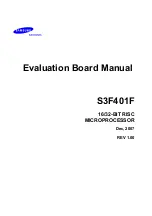
DSP Interface
4-6
Figure 4−5. CCS Context Menu
-
With this done, a new dialog window with the properties of the graph
appears. Here, a few values must be entered, whereas most of the
settings can be left in the default position:
J
Start Address: This is the starting location of the acquisition buffer
containing the data to be graphed. When the graph is updated, the ac-
quisition buffer, starting at this location, is fetched from the target
board. This acquisition buffer then updates the display buffer, which is
graphed. In the case of the sample program, set it to r_buffer.
J
Acquisition Buffer Size: This is the size of the acquisition buffer you
are using on your target board. In the case of the sample program, the
size of the r_buffer is defined with the symbol BUFFER_SIZE in the
main.c file and should be set to 1024 in the dialog window.
J
Display Data Size: This is the size of the display buffer that you use.
The contents of the display buffer are graphed on your screen. The
display buffer resides on the host, so a history of your signal can be
displayed even though it no longer exists on the target board. When
using the sample program, set it to 1024 as well.
J
DSP Data Type: Select 16−bit signed integer from the drop-down list.
All manuals and user guides at all-guides.com
all-guides.com















































